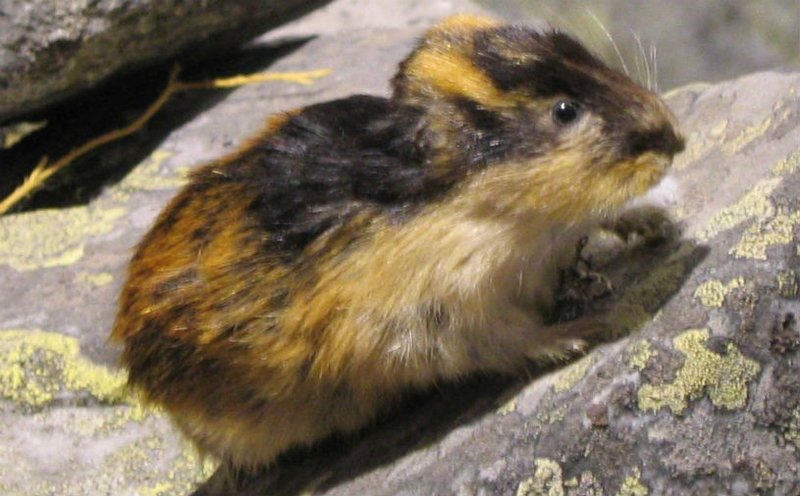
Historically, lemmings have been linked to dramatic population booms and falls, leading to the misconception that they engage in mass suicide. But can these tiny animals actually pose a threat to us? Let’s dive into the world of lemmings to uncover the truth about their behavior and what it means for us.
Understanding Lemmings: The Basics
To start, let’s explore what lemmings really are. These small rodents belong to the subfamily Arvicolinae, which also includes voles and muskrats. They’ve adapted well to cold environments, primarily living in the Arctic tundra and subarctic regions. Their thick fur and short tails are perfect for enduring harsh winters.
Lemmings are known for their remarkable breeding rates. A lemming can have several litters each year, each consisting of multiple offspring. This rapid reproduction contributes to their population booms, which can lead to large groups of these animals moving together in search of food or better habitats.
However, this behavior can sometimes create misunderstandings about lemmings. The myth of mass suicide emerged from their migration patterns. Often, when food is scarce, lemmings will venture far from their home turf, and it’s not uncommon for them to meet tragic ends during these journeys. But the truth is, their behavior is driven by survival, not a death wish.
Are Lemmings Dangerous? Let’s Break It Down
Now, let’s tackle the big question: Are lemmings dangerous to humans? Honestly, most experts would say no. Lemmings aren’t aggressive creatures. When left alone, they prefer to mind their own business, munching on grasses and other vegetation. Their main defense mechanism is to flee rather than fight.
However, there are a few scenarios where interactions might occur. For example, if a person were to inadvertently corner a lemming, it might bite in self-defense. But these incidents are quite rare. Most of the time, lemmings are more interested in dodging human contact than engaging with us.
In terms of health concerns, lemmings can carry parasites, much like other rodents. If a lemming is handled improperly, there’s a chance of transferring these parasites. But again, this is more of a concern for wildlife enthusiasts than the average person just enjoying nature. It’s always wise to observe wildlife from a distance, ensuring both your safety and the lemming’s.
Myths vs. Reality: The Mass Suicide Story
You might be wondering why the idea of *mass suicide* even became associated with lemmings. The story often goes that these animals, overwhelmed by population growth, jump off cliffs in large numbers. It sounds shocking, but it’s largely a misunderstanding tied to their migratory behavior.
During periods of high population, lemmings can migrate in search of food, and sometimes they’ll cross treacherous terrain, including cliffs and rivers. Unfortunately, this can lead to accidental deaths, but it’s not a deliberate act. In fact, many wildlife documentaries have contributed to this myth by dramatizing these events.
It’s a classic case of sensationalism over accuracy. So next time someone mentions lemmings jumping off cliffs, you can confidently clarify that while they do migrate, they’re not quite the tragic figures some portray them to be.
Interactions Between Lemmings and Humans
Interactions with lemmings typically happen in their natural habitats, mainly in remote, cold regions. For most people, this means a lemming sighting is a rare and exciting experience—much like spotting a rare bird. Tourists venturing into lemming territory might catch a glimpse of these lively creatures from afar, but actual encounters are limited.
For those living in areas where lemmings roam, such as the Arctic regions of Canada or Scandinavia, the concern is more about ecosystem balance than a direct danger to people. Lemmings play a significant role in their ecosystems, serving as food for various predators like owls, foxes, and wolves. Their presence helps maintain the balance of nature.
If you’re an outdoor enthusiast or a wildlife photographer, encountering lemmings can be a treat. Just remember, it’s best to keep a respectful distance. Observe their behaviors without getting too close, allowing them to continue their daily routines undisturbed.
At the end of the day, lemmings are not dangerous to humans. They’re fascinating little creatures that play vital roles in their ecosystems. While they might have some quirky behaviors that spark curiosity, there’s no need to fear them. Instead, appreciate their adaptability and the unique role they play in the animal kingdom.
So, the next time you hear tales of lemmings engaging in mass suicide, you can confidently understand the reality behind the myth. Embrace the stories and the science, and support wildlife by respecting their habitats. After all, these little critters deserve our admiration, not our fear.

